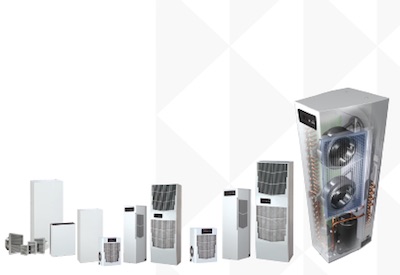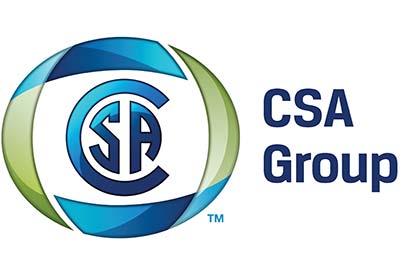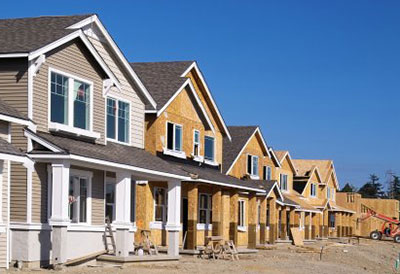Why Optimize A Cooling Set Point?

July 9, 2017
Electrical and electronic equipment, as well as components, are typically housed in an electrical enclosure designed to provide protection from the external environment. Electronic components are sensitive to temperature changes. At high temperatures, drive performance is de-rated; I/C-based devices are adversely affected by erratic output/ voltage migration. Plus, properties of silicone materials change with temperature extremes. In wiring insulations, elasticity and strength are reduced; ductility increases temporarily and atomic mobility increases.
On the other hand, cooling below the dew point leads to condensation, which promotes corrosion, battery failure and I/C -based devices behave strangely. Hence the need is to keep the enclosure space at an optimal temperature point for ideal performance of the electronic components.
Source of heat load
There are several types of devices housed in the enclosure of an automation control system– variable frequency drive (VFD), servo drive, programmable logic controller (PLC), starter kit, power supply, inverter, relays, terminal blocks, indicator lights and in many cases a transformer. Electronic components generate heat which has to be removed for maximum component life. As information processing becomes more powerful, the heat generated from electronics continues to increase. All inefficiencies of the devices contribute towards heat generation.
Maintaining enclosed equipment
As we understand how temperature extremes can prove dangerous for the equipment, we can begin to find solutions to maintain optimal temperature to run devices and extend service life. The set point for electronics can be higher as compared to average air temperature set point inside a house. We should consider choosing a set point that is ideal for cooling electronic products instead of what we typically think of as comfortable for the human body. Here are some advantages of an optimal temperature set point:
1. Lower operating cost of the system — air conditioning runs for a shorter duration to meet the heat load
2. More efficient — the unit draws less overall watts due to less operation time
3. Low operating hours extend the durable life of the product
4. Mitigates condensation problems that lead to premature failures
Preventing condensation
Moisture in the air by itself is not a problem for electronics equipment or components until cold surfaces cause the moisture to condense. If the enclosure is being cooled by an air conditioner, most of the moisture is condensed by the evaporator coil and removed through a drain system or active condensate management. However, to avoid condensation in unwanted locations inside the cabinet, it is necessary to understand the possible sources of moisture and to mitigate those beforehand to reduce the extent of the problem.
Effects of condensation
Corrosion and short circuiting are two major potential harms associated with condensed water inside an electronic cabinet. Corrosion causes increased electrical resistance, which in turn generates additional heat and contributes to decreased and inconsistent component performance. In addition, corrosion can lead to rusting of critical electrical components, increasing the risk of circuits shorting out, as well as dangerous occurrences of arcing and sparking.
Needless to say, any failure will have a financial impact as well. To ensure optimal life expectancy of components, take several precautions to help prevent these harmful conditions.
Moisture sources and control
Moisture can enter an enclosure from numerous sources in many environments and applications. For example, in indoor washdown applications, it is possible for high pressure spray with soap lubricants to penetrate components and gaskets. Plus, in cases where conduit or pipe fittings aren’t sealed properly, condensation may form in the pipe or conduit and drain directly into the enclosure.
In wet or humid applications and environments, moisture enters an enclosure when the enclosure’s door is opened for service or maintenance purposes. Since internal components generate heat within the enclosure, the warmed air inside can hold even more moisture. When the enclosure surfaces cool to the dew point as a result of shutdown, lower evening temperatures or lower outside air temperatures caused by a cool rain and other circumstances, condensation forms.
Large temperature variations between the inside and outside of the enclosure can also result in pressure differences that may create a vacuum and draw water through the fittings and/or component and gasket seals.
It is evident that all the sources of moisture are external. If moisture is prevented from seeping inside the cabinet, the internal components will be in dry air. A properly sealed cabinet using gaskets can help in stopping the leakage of outside moist air. Also, making sure the enclosure door shuts fully and properly after every use, and less frequent opening and closing of enclosure door will prove favourable in preventing the condensation issue. If there is a continuous drain from the cabinet, it clearly signifies that there is a potential leak of outside moist air into the enclosure space, which is being constantly condensed inside the enclosure.
Prevention of condensation with optimal temperature set point
Choose the correct set-point to avoid condensation issues. Condensation occurs when moist air is cooled or comes into contact with a cool surface that is at or below its saturation point, also known as its dew point. At this temperature air can no longer hold all the moisture, and water vapour condenses into droplets that can contact critical surfaces. The higher the moisture content in the air, the higher the dew point, which can result in condensation if the surrounding surface is colder than the dew point. So, to help prevent condensation from occurring, it is important to control the moisture amount in the cabinet air and optimal temperature setting of the cabinet. If the temperature is below the dew point of external or internal air temperature, the condensation will occur at the outside or internal side of the enclosure.
Recommendation for temperature set point
For NEMA 12 cabinets, the maximum permissible temperature before the wiring insulation performance starts derating for a Class A wire is 104° F. Most enclosure test standards are rated at 95° F for the inside enclosure temperature, which makes it safe to assume that the electronic components would work fine at or below this maintained temperature. However, a controller might have a hysteresis, which means that if set to a particular set point, the unit might actually be operating at a different temperature than the set point. The temperature within the cabinet might also vary at different corners.
To take care of the variation of the temperature inside the cabinet and the hysteresis of the controller, and still keep the temperature below the permissible limits for optimal performance, the set point of 80° F is recommended. As an example, if the hysteresis of the controller is 10° F and the set point is 80° F, the cabinet temperature can elevate to 90F (10F above the set point) which is still close to optimal operating temperature for electronics and should cover any temperature variations across the cabinet to keep it below 104° F.
This article was first published online by Pentair.

















